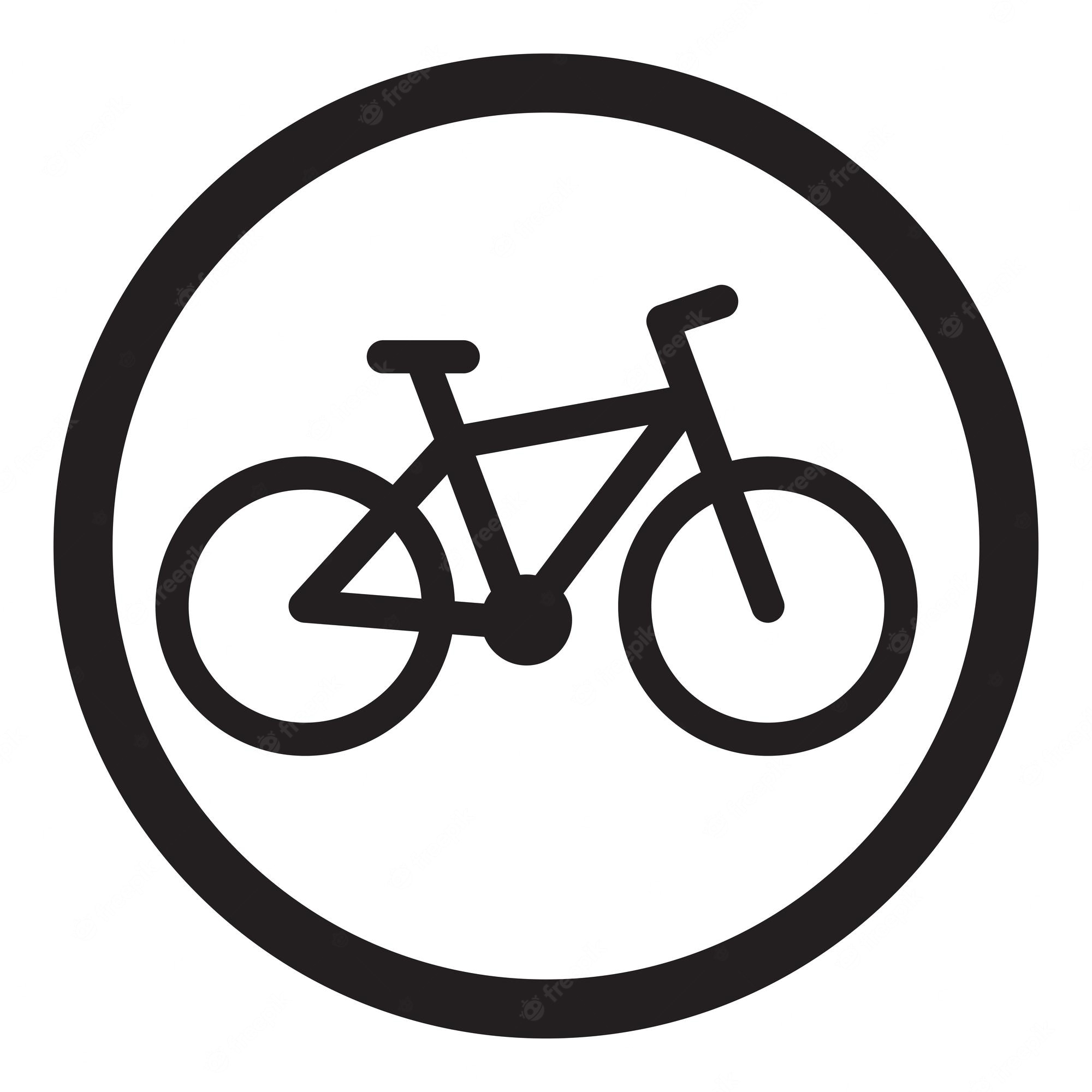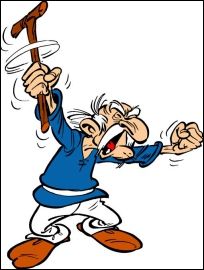Today I did my first 20 mile (33km) ride on my hardtail XC bike. I learned how to ride a bike about 1.5 months ago, but I’ve been riding pretty consistently since I learned. I ride exclusively in the city, it’s a very walkable city, but the paths aren’t always the best. I did 33km in 2 hours 53 minutes, not including breaks for water or to eat.
I see people saying that 10MP/H (16KM/H) average is a good average to shoot for, but i can’t even get my average above 7.1MPH (11.5KM/H), even on shorter rides. What am I doing wrong here? How are people going so freaking fast on bikes in cities?
Cities do lower average speed significantly, but 30k in 3 hours is indeed very slow.
Hard to diagnose from afar, but I’d say take a look at shifting technique and pedaling cadence. It’s actually not so easy at first to know when to shift and which gear is right (until it becomes second nature and you never think about it again.)
Pedaling speed should be viewed as somewhat of a constant (try to aim for 60rpm at first, maybe?), and your job is to pick the gear that feels comfortable for that cadence in a given situation.
I’ll try to focus more on my shifting! Thanks for the advice :)
One question - for hills, for example, which derailleur has more of an effect? For example, on a big hill, am I better off being in 1st gear on the chainring and 3rd out of 8 gears on the cassette, or 2nd gear on the chainring and 1st gear on the cassette? Which do people usually use?
In terms of pedaling, it doesn’t matter. The same ratio between teeth in the front divided by teeth in the back will feel exactly the same. The only rule here is that you are aiming to keep the chain in a somewhat straight line. Supposing you have two chainrings in the front: Never go small-small or large-large, as that would put strain on the components. For a 2x11, for example, usually all gears are safe except for 1-11 or 2-1, if that makes sense.
Yup, don’t cross the streams…or chains as they say :)
A common proverb in cycling.
As well as “it doesn’t get easier, you just get faster.”
That is indeed something people actually say, but it’s a lie. It gets easier in so many ways.
Since you don’t want to shift the front gear while under pressure I try to shift it first before a big hill. But planning ahead is the only reason to pick one or the other of your overlapping combinations.
Here’s a tool to visualize gear ratios that I found interesting https://mike-sherman.github.io/shift/
I wouldn’t think of it that way. Just try to avoid twisting the chain too much. If your chain is all the way to the left in the front, keep it on the left half in the back. If you feel like moving the rear to the right half, just shift the front gear to the middle instead. Beyond that, just do whatever feels right.
I usually set the front to the ballpark I expect to be in for the foreseeable future, and fine tune in the rear as I go. It’s usually harder to shift the front while pedaling hard uphill in my experience.
I usually just ride the bike as if it was a 1x, never shifting off the second chainring, too much to think about using both, unless it would make climbing easier.
That is a big hint to why you feel you’re going slow. On flat or downhill ground I would usually be on the very hardest gear in order to be able to keep up with the wheels. If you’re constantly in a medium gear you’ll not reach very high speeds on easy terrain.
But maybe you shouldn’t worry about that right now. You’re pretty new to this, so you don’t need to optimize for speed. Just go at a pace comfortable for you, while you get used to this new way of moving. Perhaps it’s even a good thing to be going slower right now, that way there’s more time to react, and less injury if you have an accident.
Cadence is also a personal preference, lower cadence is more based on muscle power (50-70 rpm) higher (90 rpm+) put more load on your cardiovascular system. In time you’ll drift towards what feels natural for you Going up hill try experimenting with the cadence. You’ll quickly discover what cadence you feel is efficient for you
In regards to your gearing question, it is hard to tell, it’s about ratios between the number of teeth on the cassette and chainring. Find an rpm you like, adjust gear until you find that rpm
Hard agree on the last sentence, just find a rhythm that feels right and adjust gears so you can paddle that on your current incline.
The more you ride, the faster you get, generally speaking.
Mountain bikes are not primarily made for speed, for what it’s worth. You’ll find the fastest speed in road bikes (actually time trial bikes, but these are not made for general riding).
I like my XC simply because I got it new for cheap (around 220$USD) with great reviews from a local brand, and I feel more confident on it than I would on a rigid road bike that could break at any moment if I hit a pothole wrong
Don’t worry about speed. Speed is a practically worthless metric, especially when you’re starting out.
Your focus should be on developing a sustainable cadence: the frequency of your pedal strokes, and the pressure you exert on the pedals. It’s a balancing act. For a given output, the faster you pedal, the less pressure you need to put on the pedals. Speed up or slow down from your ideal cadence, and you just wear yourself out without improving your speed.
I looked to maintain about 65-75 strokes per minute, and not pushing so hard that my thighs would start to burn. Some people prefer slower and harder; some prefer faster and lighter.
The purpose of shifting is to maintain consistent stroke rate and pedal pressure. Speed is incidental: if your cadence is good, whatever speed you get will also be good. That might be 7mph; it might be 17mph. It might be barely above a walking speed while you climb a steep hill in low gear, or 40+mph downhill.
Ignore your speed. Stick with your sustainable cadence. Downshift (and let the bike slow down) if the pedals are too hard. Upshift (and let the bike speed up) if they are too soft.
City riding is slow.
Pump up your tyres.
Go at whatever speed you like.
Will I get a dented rim or a popped tire if I go down stairs at 50-55PSI? The tire is rated to 65.
You learned how to ride a bike a month and a half ago and you’re already talking about going down stairs? I’m not gonna tell you you’re wrong, but I will say that’s pretty damn adventurous!
I’d suggest getting some more experience so you develop some feel for how different tire pressures work (and more importantly, how shifting your weight forwards and backwards works and other bike-control stuff like that) before trying that. But then again, I’ve been riding since I was a kid and I still shy away from stairs so what do I know?
I’ve gone down stairs, but only the kind that are sort of long (as in three stairs, but the space between the stairs is long as opposed to the three stairs being one after the other. It is pretty scary as I have trouble getting over the back wheel (maybe my saddle is too wide?The reviews I read about the bike said the saddle that came with it was terrible, so I’ve been riding on this saddle).

Looks like the seatpost may be backwards, so you might be sitting closer to the handlebars and bottom bracket than you should be. Can you give us a picture from another angle, from behind and lower?
I put the bike together myself out of the box, so that’s certainly possible.

Yeah, you should remove the saddle and turn that thing around, then re-attach the saddle pretty much level. I would not want to spend more than half an hour sitting on that setup. You may be able to simply loosen the nut and turn the part that is currently clamping the seat post 180 degrees to the front, no need to remove the saddle from the clamp.
Rule of thumb is this: If you turn the pedals to a horizontal position (let’s say the left one facing forward), the part of the leg just below your kneecap should be pretty much perpendicular to the pedal’s axis. If your saddle is too far forward or backward, you will not be able to pedal efficiently. It’s probably part of the reason why you cannot go very fast since you’re unable to use the leverage of the crank arms that way.
About saddle height: If your saddle height is correct, you can turn one pedal to its lowest point and place your heel on it. If your leg is then just slightly bent (shouldn’t be straight, but not a significant angle either), you’re probably pretty spot on.
As an avid cyclist, I can say that those are just pretty good rules of thumb. With my experience as a rider, pretty minor adjustments make a big difference and I tweak new bikes or parts as I go based on how it feels. I also learned from bad experience (knee and achilles heel problems from too high a saddle, for instance), so what I wrote above is a good starting point for you until you start getting a feel for such things with more kilometers under your belt. Welcome to the club, champ!
I have trouble getting over the back wheel (maybe my saddle is too wide?)
I think it’s more likely your saddle is too high or your handlebar reach is too long.
Saddle seems to be the right height according to the basic fit test I’ve seen (pedaling with heel should have almost full knee lockout. Could be my handlebar reach is too long, especially considering I had my handlebar sweep upside down until a kind person here pointed that out to me :D
No. Those issues will more likely be caused by smashing the wheels into a curb or stairs going up them and not using your weight over the bike to help the wheels up. A hard impact like that can cause a pinch flat if you are running tubes of possibly damage the rims too depending on the severity of the hit.
Tyre pressures really do depend on what type of riding you will be doing and your terrain.
50-55 is good for trying to stop pinch flats if you are running tubes and for running around on pavements and the like keeping your speed up by trying to have less deformation in the tyre to make your rolling resistance marginally less.
Conversely if you are riding off road then you want less pressure as that helps the tyre deform more, increasing the amount of tyre that is in contact with the ground at once and there by increasing your grip levels.
Damage like that is more dependant on the way you ride your bike and tackle obstacles as no amount of pressure is going to protect your rims in your just plough through objects. If I’m riding on tarmac with my MTB then I’ll usually add a bit more pressure but only up to about 30psi (this is tubeless though bear in mind) and stair sets are not an issue.
Got it! I put the rear tire to 55PSI and the front tire to 50PSI. Would making the suspension softer in the front further prevent possible damage?
Not really. Going down stairs you shouldn’t have much weight over the front and the suspension won’t be doing that much work until you get to the bottom where it will compress as you hit the flat. If anything if you went too soft you could hit the bottom of the stair set and bottom out the forks which opens up another can of worms.
If the suspension is working fine for you right now I’d leave it as it is.
As long as you deweight the back wheel as you go down the stairs you’ll be fine.
What does that even mean?
When you go down stairs you want your weight backwards over the rear wheel which is gonna add more weight to the back wheel. To “deweight” the rear wheel you’d need to lean forward which is only going to end in pain going down a stair set.
edit are you referring to going up curbs as opposed to downstairs? In which case this would be relevant?
Correct. You want most of your weight over the front wheel because if you’re over the back wheel you bounce harder and you’ll get a lovely snake bite pinch flat for your troubles. You aren’t going to be completely over the front wheel just a little bit to get the back wheel lighter since you have no rear suspension.
I ride enduro on a hardtail mtb. I used to get the dreaded snake bites until i learned how to ride stairsets.
ERM what? “Most of your weight over the front wheel” I’m sorry but this is just blatently wrong and goes against the physics of what is happening. If most of your weight is over the front wheel you are going over the bars.
Then you say you aren’t going to be completely over the front wheel, just a little. But you just said most of your weight.
What you are saying makes absolutely no sense and isn’t even consistent across your message.
This is bad advice that could get someone hurt man. Not cool.
I ride every day and down a set of stairs. If he wants more in depth info he can go watch a video.
What i’m saying makes sense if you’ve ridden any features that require you to deweight your back wheel. Most of your weight will be over the front wheel but you yourself will be mostly center on the bike. This isn’t rocket science. If he wants to gap the stairs (doubtful since he said he learned to ride a month ago) then i’d say lean back in preperation for a bunny hop but since he isn’t then the easiest thing he can do to not fuck up his bike is to lean forward a tiny bit as he descends. He’ll try it a few times and figure out where his balance point is since it’s different for everyone. until he figures it out he’ll probably pop a few tires.
Biking over features can get you hurt, if you only take advice from one internet stranger you’re asking for trouble anyways.
⚠️ Dangerous advice. As others are saying, this is a recipe for going over your handlebars and getting yourself hurt. Check out some “how to mountain bike”videos.
I’m also struggling to understand 😅
Don’t listen to him, he’s giving you a recipe for going over your front handlebars hard.
I believe I’ve done this once before trying to go over a curb - not fun.
It’s awesome that you are cycling! If you learned only 1.5 months ago and are already doing 20 mile rides you are doing great. Your body probably needs to adapt to the movement a bit, so I wouldn’t worry too much about speed just yet.
Thanks! I’ll just keep doing what I’m doing then. I love cycling, it allows me to explore - used to walk around 10-13 miles a day a few times a week, but now I can explore more of the city in half the time!
I see two big things that others have touched on. One, you wll not believe how much of a difference a real road bike makes in your speed once you have a chance to try one, and the average speeds you’re seeing are almost definitely on road bikes. I don’t think you need to go out and get one now or anything, get comfortable with what you have first, but also know that if/when you try one your average speed will probably jump at least 5km/h.
Second, cycling takes a lot of time to get used to. Anecdotally, when I first started I was a competitive distance runner and would occasionally win smaller races, and I started riding with a bunch of older relatively out of shape guys who had been cycling for decades. On about one sprint or hill a ride I could beat them, but they would kick my butt on the rest of the ride for more than a year before my conditioning caught up and I started to be able to keep up consistently.
I see two big things that others have touched on. One, you wll not believe how much of a difference a real road bike makes in your speed once you have a chance to try one, and the average speeds you’re seeing are almost definitely on road bikes.
I’d say it’s less the bike and more the tires. My “city bike” is a rigid mountain bike from the '90s (edit: which is also extra-heavy because of basket/rack/panniers/fenders), but because I put smooth-ish (but still wide) tires on it, I cruise at maybe 15-20 mph on flat ground. Sure, the handlebars/riding position and (in OP’s case) power losses from the front suspension make some difference, but not nearly as much as the tires until you get going really fast.
Hills absolutely destroy me even in the lowest gear, I feel like spinning the pedals that fast just wrecks my cardio for some reason.
Sounds like you were pretty out of shape. That won’t change in just six weeks. You should start seeing progress, though. If not, see a doctor and get checked out
It’s certainly possible that im just in bad shape, no arguments here :)


Just keep going and things will get better.
This is my second season cycling. I live in an extremely hilly area and last season I got to where I could climb the steep hills without getting out and pushing about halfway through the season, but long and gradual hills absolutely murdered me. This season I started tackling some long gradual hills
Honestly you have to play with the gearing to find what works well for you on hills. Higher gears spin harder but put down more power, lower gears spin easier but put down less power. Best is to be in the highest gear you can sustain. Personally I never touch the lower half of my gears because there’s just too much leg spin and I tire myself for nothing.
Eventually you’ll get to where you can stand on the pedals while at a low cadence for extra power (useful on hills or with a trailer. When I have my kids behind me by butt basically never touches the saddle) but ultimately it’s something that takes building muscle and practice to get comfortable
Hehe, I’m a big guy and weigh about 100kg, on flat ground I’m on the highest gear nearly all the time because my legs are strong rather than agile, but up a relatively steep hill I need to go on the lower gears and crank myself up there.
Are traffic lights added to your average? On my commute I lose up to a third of time on red traffic lights.
A lot of the time, it’s pedestrian red lights while I’m waiting for the cross walk to open up
How long are your breaks? How much time do you spend waiting for traffic lights or letting other vehicles pass? What’s your standard speed?
Maybe you could go faster if you did shorter distances. 3 hours is kind of a long time for doing a sport you only picked up 6 weeks ago.
My breaks are maybe 3-6 minutes, depending on if I’m eating or not.
I generally don’t ride on roads as I’m still a bit nervous to do that, so I’m generally riding on paths.
My speed on shorter rides is the same for some reason, which is weird.
Are you riding on pavement or trails? Mountainbike tires are generally a lot slower on tarmac, due to the tire pattern, and width, compared to a road tire. Also on tarmac you should increase the pressure in your tire quite a bit.
Don’t listen to which speeds people tell you to aim for. Look for improvements in your own rides.
Road surface, hills, wind, tires, style of bike, your height, position on the bike, traffic and many more things have an impact on your speed. Compare yourself with yourself
I’m riding mostly on sidewalks.
I’ll try raising the pressure in my tires - would that affect going up/down curbs and stairs at all? I have my tire pressure in the middle of what it says on the tires (they’re pumped to around 50PSI, should I add more?).
Also, how do I adjust my front fork suspension to be ideal for roads but still allow me to go down stairs and curbs? Should it be stiffer or more absorbent?
Try playing around with the pressure. Find what you like. Suspension is a real speed killer, on even surfaces. With every pedal stroke you compress the suspension, and that power doesn’t make it to the rear wheel. If you don’t have a lock out, adjust to as little suspension you feel works for you.
There are a lot of rules of thumbs, but in the end it needs to work for you. Stiff suspension and hard tires will give you speed, soft suspension and soft tires give comfort
What will hard tires and a soft suspension give me? I just want to make sure I don’t break something going up and down curbs and stairs and when I don’t see the occasional pothole and ride right over it 😅
On my bike, the tire has the pressure range it can handle safely printed on the side. I tend to inflate mine close to maximum for city biking.
I’ll go ahead and pump mine up some more then!
training, conditioning (more than a month) routes, gear (you’d be surprised an how much you gain from new wheels, for example)…oh…and age?
Basically be comfortable where you are right now, you just started. Set yourself up for incremental and sustainable gains, the when you are able to try and hit the higher speeds.
I’m 28, a tiny bit overweight but working on it. My bike is new, but it’s not top end by any means, but also not a department store bike.
I guess I am comfortable, I’m just worried that I’m kind of sucking at cycling.
Nah man, you’re at the beginning
Get an app to keep tabs on your progress (in the beginning just worry about distance, not time). Try to be consistent (I used to ‘commute’ to work…started with 20 min, ended up 1.25h 5x per week).
The fun part is starting to figure out what gear you need, then try and not go broke… Bike Nash are has some really good deals, and also go to the same bike shop for all your repairs and once they see you for awhile they’ll know not to upsell you recreation gear.
Keep it up and one day, you’ll wake up with a flat stomach and eat whatever the fuck you want.
The flats stomach part sounds quite fun, along with the eat whatever I want thing.
At this point, I don’t see myself needing anything. I’m perfectly happy with the bike I have and have fun riding it, and as my legs get stronger, I’ll probably get faster.
I use my smart watch to track every ride on GPS and my HR, so that I get a good baseline of what I’m looking at.
Yup, that sounds right…I think what I was trying to convey is that once you start thinking about upgrading your gear be careful - it gets silly quickly!
Also, the Doc told me: ‘as far a s coping mechanisms go, this is a good one’
great for the mental health!
Have fun!
Spending money on gear is a good coping mechanism? I agree! My fiancee hates it though:D
Nonono…the biking is the coping mechanisms!!! (I had a v. high stress job)
Buying gear is for dopamine, silly person…
Already looking for new tires and I feel the dopamine.
I’ve been thinking about your post as I was biking to work this morning. I see others have talked to you about tires in the meantime but for on road riding I can really recommend pretty slick tires even on a mountain bike they will make a huge difference in resistance, especially if you inflate them as hard as they can take(look on the side of te tire for something that says inflate to xx psi). Hard smooth tires run nearly as good as racing tubes.
Another thing I was thinking about is saddle height. Most new cyclists put their saddle way too low, which is understandable as you want to be able to put your foot on the ground when you lose balance. However that is not the best thing for transferring muscle power to your pedals. I found that for good force you want to have your saddle so high that when you sit on it and you put a foot on the pedal at it’s lowest point, with your foot parallel to the ground, your leg is fully stretched.
This does mean that to put a foot on the ground you have to keep your other foot on the pedal and slide forward off the saddle. The posture of your leg for pedalling will be way better getting more power to the bike and reducing stress on the knees.
Make sure your foot rests on the pedal with the front part, like you can see bike racers do. That allows for more muscles to work on pushing than when the pedal is under the middle of the foot.
Beware that raising the saddle does change the front-back balance a bit as your weight sits higher.
I read you bike down stairs, if it is only one or two steps that is not going to change much but if it’s a full flight of stairs that might be a problem.
Frankly I’m 52 years old and have been riding bikes since I was 3 and I have not ridden off more than a couple of steps at a time for the last four decades, it’s just not something I wish to inflict on my bike, nor on myself. Hopping down half a meter while at speed is no problem, but really riding of flights of stairs? You are a braver man than me.
I agree on the saddle height. It’s important to have it high enough so you can push efficiently.
About the tires, I don’t agree 100%. Higher pressure might give you slightly better rolling resistance but will give you way more vibrations and shocks which makes you tired in the long run. I can poste a page of a book explaining this better if you like. In general it’s important to have smooth tires (usually high thread cound and good quality rubber) for a low rolling resistance.
Hmm I hadn’t thought about the shocks on hard tires bbeing so tiring though that does make sense. It does make a serious difference in resistance though, main downside for me of hard tires is less grip, both because of a smaller contact area with the ground and because an uneven roard makes you bounce more. I suppose it’s a matter of adapting to circumstances. I do lower pressure for soft or smippery roads a tiny bit sometimes.
It’s all in this book: https://www.renehersecycles.com/shop/print/books/the-all-road-bike-revolution/
Thanks!
Gearing, tires, and geometry make all the difference in the world.
My Transition Sentinel is only geared for mountain biking. It’s a terrible city bike. Tons of shock, high torque gears for steep hills, cannot go very fast. But it’s insane when you need to climb or descend mountains. It has knobby, 2.4in tires.
My city bike is an ebike, and even though it’s a single speed, it’s pretty comfortable going between 10-30mph on that gear alone. The battery allows me to haul lots of groceries or baggage (and climb steep hills), and it’s tires are wide enough to not get stuck in tram rails or gaps in the concrete road. I have knobby tires to avoid popping tires, but smoother, thinner tires will be more efficient.
Edit: if you have a shock, try locking it out if it has lockout.
I’d also recommend checking out city bikes, such as road, gravel, and upright bikes. There’s an incredible amount of diversity, and a downhill mountain bike is about as far from a road bike as one can get. One can roll over a rock the size of a watermelon, the other can coast for meters off of a pedal stroke. Ebikes also are phenomenal as car replacements (or even just as car offsets), but generally cost $1,500+ with tariffs.
Who cares. Are you having fun? Because that’s all that matters.
Fair enough. Maybe I’m just too competitive for my own good. But to be honest, it takes up a lot of time, and I’d like to get that sort of distance done in less time :D
Well, what kind of bikes are the people you’re comparing yourself to riding? Because a cross-country hardtail - while versatile - is still fundamentally a mountain bike, and it’s never going to reach the same average speeds as a fixie or a gravel bike, for example.
Probably road bikes, I don’t see many people doing fast or long distance around me on MTBs
It got a lot to do with leg strength and endurance. You mentioned that you started to do it 1.5 month, that’s like still very early into that skill so 11.5kmph is really normal, like REALLY normal, and nothing to stress about it.
Another thing affecting your speed is you still getting a hang of it on when to apply power and when not to. Cycling is a whole new thing you need to get your muscle memory used to. Even if you jog regularly before, the difference in muscle use and timing would impact your cycling speed. Keep riding and have your leg tuned to it, there’s no technique or theory to read for this one, you just have to keep riding and you will eventually get it.
Also sometimes city riding isn’t always the fastest, it depend on your route. Turn will slow you down, junction will slow you down, pot hole or uneven road will slow you down, headwind will slow you down, ascent will slow you down.
Keep it up! I think you did good for 1.5 month of cycling, riding 33km takes a lot of endurance. I did a sightseeing tour at a neighbouring town recently for 26km and my average speed is 13.7kmph. So i’d say ride in your own pace, it’s not a competition.
Thank you! I’ll just keep doing what I’m doing then - our sidewalks vary from fantastic to potholes everywhere and stupid people standing in the middle of the street with a few massive hills thrown in there for good measure.
My leg strength is good as I go to the gym and I’m a former runner who did a few half marathons, so I’m no stranger to endurance sports, but I gained some weight since the last time I did a half marathon.
I will also say that biking does use muscles in a different way than running, I personally can ride 100km somewhat easily but can’t do a 5k run without having to walk for at least a little bit. But being in good health does mean that you should build up those biking muscles pretty quick
Besides purpose built bikes for speed and distance, swapping out tires for a different tread can make a large difference. If you aren’t doingactualy technical trails and just like road or flat gravel you can get a tire that has some nubs on the outer sides but a smooth patch down the center for way less resistance when riding. When I switch to my winter tires the bikes is so much slower
Could you possibly recommend what sort of tires these would be? I occasionally go down gravel trails but no jumps or logs or anything like that, just like dirt trails. Would those still be okay on these tires?
I run Michelin Country Rock as a hybrid tire. Anything that’s not knobbly is going to be a huge upgrade on pavement.
You also don’t need to run the same tires on both wheels. Having a slicker tire in the back can make sense as you put more weight on it, and slipping with the back wheel is a nuisance, while slipping with the front is often a disaster. So you could start off just swapping the rear. That way if it doesn’t work out, you also spent only half the money :)
Lastly I’d want to share that I really disliked those wheels that are only knobbly along the edges. Leaning over when taking a curve at speed, and suddenly transitioning from smooth to vibrating was very unsettling to me.
Besides the vibration issue, did you notice anything else like poor wet road performance, stuff like that?
I don’t really bike much when it’s wet, and never in mud, but the main downside of a slicker (but not slick) tire I’ve noticed is on steep gravel trails. I have a knobbly in front, so descending is ok, but ascending is definitely harder.
Mind that tread isn’t everything, tire size, air pressure, rubber hardness etc. all play a part. A wider softer tire might not struggle as much even without tread. (Speaking of which, I should try letting out some air next time.)
If most of your riding is on paved surfaces, you want “city bike tires.” For your bike, they’ll be roughly 26x1.5"-2.0" and they’ll be relatively smooth instead of knobby. Better ones will have features like extra puncture resistance and retroreflective sidewalls.
Random example from an image search:

The “some nubs on the outer sides but a smooth patch down the center” type of tire the commenter above recommended would look something like this…

…but honestly, I’d probably go for a full-blown city tire instead unless you’re regularly riding on loose surfaces, not just “occasionally.”
So we call them half-slicks here apparently. I decided to go with a pair of those. My performance night suffer a bit, but I prefer peace of mind to pure performance. As soon as I get paid, I plan on ordering a pair of them!
Thank you for the advice!
It really depends on the type of dirt, and how wet. Most of my summer the ground is hardpack or maintained crushed gravel. So I swap to a hybrid city tire, I don’t need lots of tread. That’s why I have the winter set with nubs and carbide studs for other weather. Is there a bike shop or two in the local area of the trails you ride? They can recommend a good tire.
But don’t worry about speed/time, just go have fun :)









